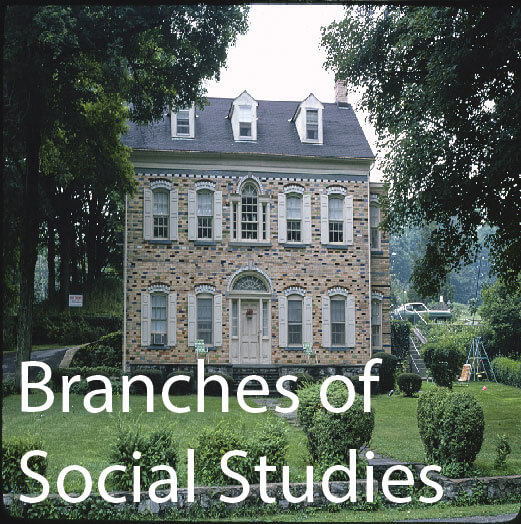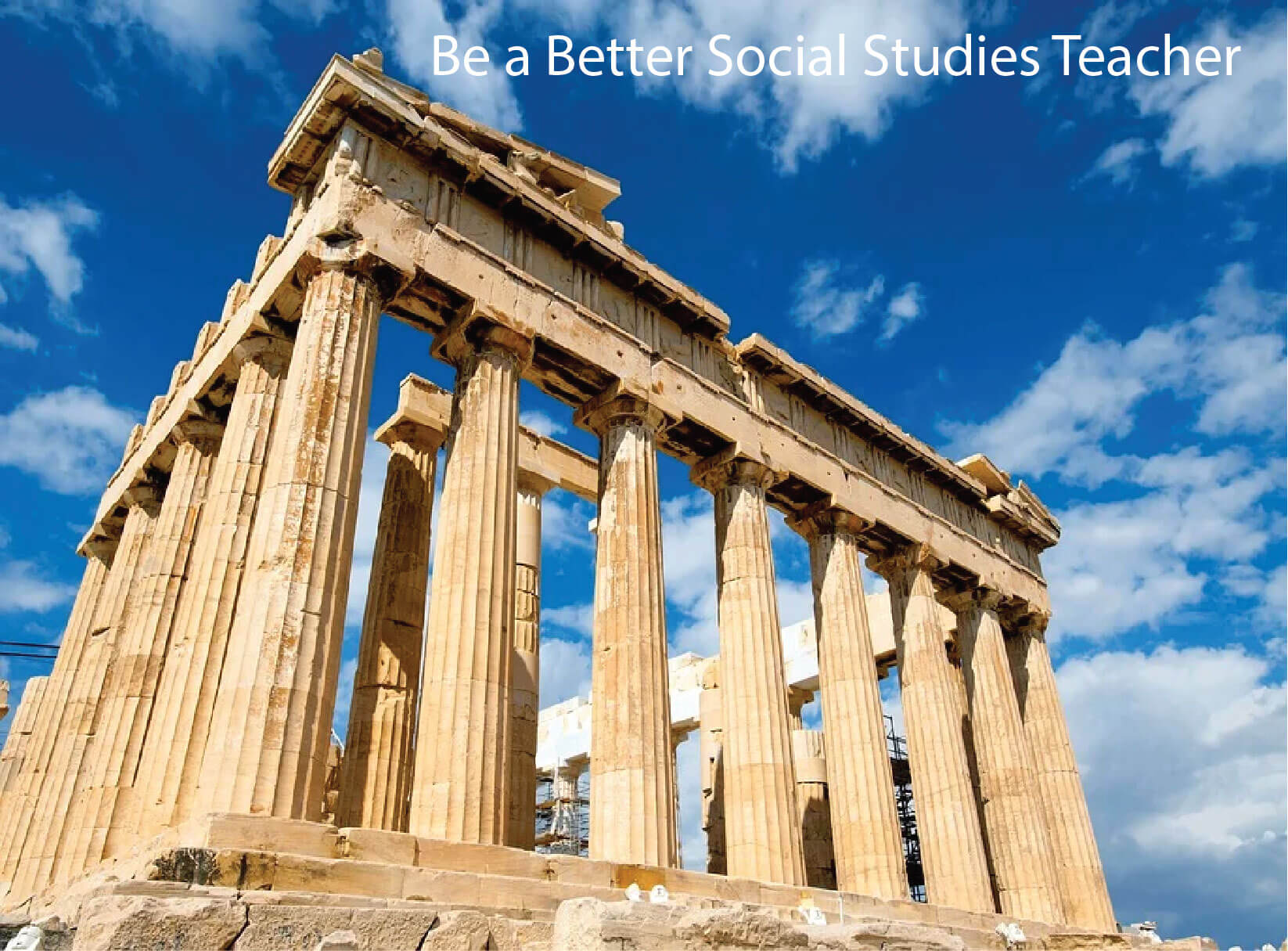- Social Studies
- What Is Social Studies
- Branches of Social Studies
Branches of Social Studies: Understanding the Limbs that Grow this Oak
 Photo of house on Rt. 213 in Rosendale, NY. by John Margolies. Courtesy of Library of Congress.
Photo of house on Rt. 213 in Rosendale, NY. by John Margolies. Courtesy of Library of Congress.The branches of social studies are the limbs that make up this vast and varied tree. They include history, geography, civics, economics, personal finance, sociology, and psychology. All of these branches have something to offer everyone; no matter what you want to study about people or society as a whole. Each type of social studies has something to contribute to a vital and complete social studies education. State standards will include most or all of these branches, although not every area is addressed at every grade level.
I have always loved this collection of branches. The social sciences provide fascinating insights into human behavior. Of course, branches is just a helpful metaphor. The reality is that each of these "branches of social studies" is a mighty tree of its own. Learning about these various "branches" or trees can be (and has been for me) a life-long pursuit.
History
History is the study of past events. It is a continuous, chronological record of all that has happened. History is the past preserved in writing. The time before the invention of writing is sometimes referred to as prehistory. History branches into many sub-fields like ancient, early modern, late modern, etc. History includes the study of wars and politics, but it can also include much more. Social history might explore small things like popular films of the time or fads and fashions of the era. It's also about the stories and myths that culture tells itself.
History, one of the main branches of social studies, is fascinating to study. Because of its focus on the past it can be an invaluable tool for any sort of social or political engagement we might want to consider. From voting, to education reform, history helps us think about – and hopefully learn from – what has come before us.
UCLA has a set of National History Standards that make for interesting reading.
Geography
Geography, one of the branches of social studies that connects to history, seeks to describe the physical features of the earth and the effects of human activity on these features. It is also concerned with the distribution of population and resources and land use. Geographers use maps, aerial photographs, and satellite images to study these things. They also collect data through surveys and interviews. Geography branches into many different types of geography like physical geography, human geography, economic geography, integrated geography, and regional geography. The National Geographic Society has a set of National Geography Standards that explain more fully what should be included in a complete study of this fascinating field.
5 themes of geography
The five themes of geography are
- Location
- Place
- Human-Environment Interaction
- Movement
- Regions
These five themes provide a broad outline that can help teachers focus their planning, but they are only one way to think about the field of geography. Geography can branch into many subfields. Regional geography might focus on specific places like the Arctic region or southeastern North America. Human geography could compare rural and urban areas within a certain region. Economic geography could focus on different economic systems like capitalism and communism.
Geography is a fascinating subject that provides essential information to us all; if we want to make informed decisions about society, we need to understand the world around us. We also need to know how our actions will affect the environment in which we live. A complete social studies education includes geography because it provides the big-picture view of human life.
Civics and Government
Civics is another of the branches of social studies that includes government and politics. It teaches about the democratic process and how we decide who will lead us. Civics also covers topics like civil rights, economics, geography, history, law, philosophy, psychology, public speaking, sociology, technology, and world affairs. Students often take a semester or year-long course in government and civics in high school.
Civics helps to prepare students to participate in their democracy and to be wise voters and consumers of news and political information. A study of civics teaches students about how government works also the rights and responsibilities that citizens have in a democracy. Civics also helps students to understand the value of volunteering and being active in their communities. The Center for Civic Education has published a set of National Standards for Civics and Government.
Economics
Economics is the "study of the production, distribution, and consumption of goods and services." Scarcity is an essential principle of economics. Therefore, economics studies how individuals, businesses, governments, and nations make choices. Economics, as one of the branches of social studies, can itself be divided into many different subfields including microeconomics, macroeconomics, and international economics.
Microeconomics studies individual or "micro" decisions about using resources. It focuses on the economic choices made every day by individuals, families, and businesses.
Macroeconomics focuses on the large scale like the economy of a country or the economy of the world. Macroeconomists, for example, study monetary and fiscal policies. Monetary policy is concerned with things such as the supply of money in an economy and interest raters. Fiscal policy concerns topics such as taxation and government spending.
International economics looks at the global economy, especially trade between nations. Global poverty is one of international economics' main interests.
Economics is a very popular field of study in the social studies because it helps us to understand what drives many decisions that we encounter every day. It can help students learn how to budget and save for different goals, and it can also help them decide when they might need to borrow money. In short, economics is all about making the best use of our resources, whether those resources are money or time or something else.
The Council for Economic Education has published a set of Voluntary Content Standards in Economics.
Personal Finance
Personal finance branches off of economics to teach people how to manage their money. It covers topics like budgeting, saving, investing, and banking. Personal finance is especially important for young people who are just starting out in life on their own. Students learn about financial needs and goals and how to achieve them. The Council for Economic Education has published a set of National Standards for Personal Financial Education.
Sociology
Sociology, one of the significant branches of social studies, is the "study of the development, structure, and functioning of society." It includes attention to society, social institutions, social relationships, and the structure of groups, organizations, and societies. Of particular interest is how human behavior is shaped by social structures. Sociology explores issues of age, sex, class, race, and gender and how these concepts impact decision-making in society. The American Sociological Association has published a set of standards for National Standards for High School Sociology.
Psychology
Psychology is "the scientific study of the human mind and its functions." It seeks to explain human and animal behavior. Psychology investigates topics such as emotion and mental processes. Psychology is most often offered as an elective at the high school level. However, some psychological concepts may appear in other courses throughout grades K-12. The American Psychological Association has published a set of National Standards for High School Psychology Curricula.
Anthropology & Archaeology
Anthropology is "the study of human biological and cultural development from the earliest times to the present." It encompasses archaeology, which is the study of past cultures through material evidence. Archaeologists work with artifacts such as tools, pottery remains, and ruins. These items tell much about a people's way of life. For example, by studying the way people dressed, archaeologists can tell what the climate was like when these items were made. The American Anthropological Association has published a variety of resources for high school anthropology.
Integration of Culture and the Arts
Integration of culture and the arts is an important part of social studies education. The National Council for the Social Studies has developed specific content standards in social science disciplines that address the importance of critical thinking skills, understanding context, and knowledge construction through the integration of culture and the arts. All students should have opportunities to be exposed to works of literature from a variety of cultures and time periods.
Ethics and Philosophy
Ethics are the "moral philosophy or study of moral values." Ethics covers topics such as justice, history, and contemporary issues. The National Council for the Social Studies has developed specific content standards in social science disciplines to address the importance of ethics. Major philosophical ideas are also part of the standards.
Why is social studies important?
Social studies helps students to understand the world around them. They learn about our country, culture, and people's way of life. Social studies also covers many other topics such as ethics, critical thinking skills, and how to apply knowledge. The different types of social studies are important to learn so that students can be successful throughout life.
Social studies helps students understand the world around them. The branches of social studies cover topics such as ethics, critical thinking skills, and how to apply knowledge. Students should have opportunities starting in elementary school to be exposed to works from a variety of cultures and time periods for them to have a better understanding of different aspects of life. Integrating culture and the arts in social studies education is an important part of instruction for students. The branches of social studies are vital to learning so that students can be successful throughout life.
What is the difference between social studies and the social sciences?
Usually, social studies is a term used in K-12 education. At the university level, the term social sciences is most often used. The one exception would be in the field of education at the university level the term social studies is used to describe an area of teacher licensure and also courses in which students learn how to become social studies teachers. In general use, both terms often refer to the same or similar content areas such as history, geography, economics, sociology, and so on.
Branches of Social Studies and the Joy of Social Studies
In addition to all of the standards published by the different content organizations, the National Council for the Social Studies has also published National Curriculum Standards for Social Studies. Social studies is a wide field that has many possible topics for study.
Overall, the branches of social studies branches help us understand people, their motivations, and how they make decisions by studying different structures of society. Social studies’ branches are very broad. When these branches are combined, they make a mighty oak that represents both people and society. Learning about social studies, because of its many and varied topics, can be quite interesting and enjoyable for students.


New! Comments
Have your say about what you just read! Leave me a comment in the box below.